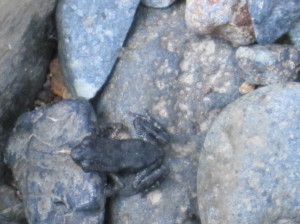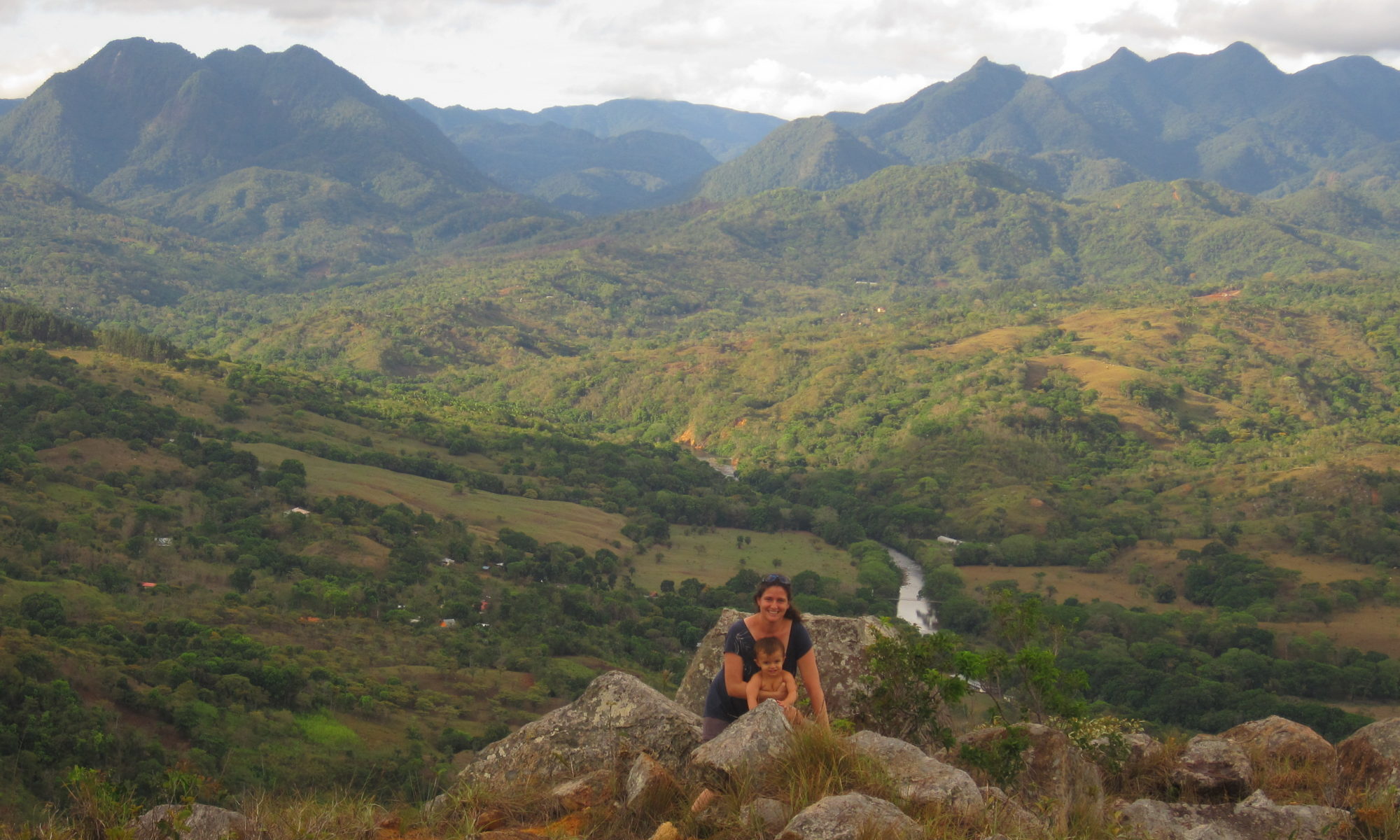

Alright, I admit, I’ve gone on a nature streak in my recent posts. Yesterday Cele went on a hike up the Mulaba River that has its headwaters in Santa Fe National Park. Found an amazing waterfall and this cutie of a toad. What was most surprising was how small he was – about the size of a fingernail. According to Heidi Ross, of the El Valle Amphibian Conservation Center, he is a probably recently out of the water, and will grow to be about 3-4 cm long. His call (termed vocalizations by people in the know) sounds rather like an alarm clock – check it out from the Smithsonian Recordings
What’s amazing about amphibians in Santa Fe?
First, there is a lot of diversity of species and even some morphs or forms that are specific to the Santa Fe region! For example, there is a type of poison dart frog (Dendrobates auratus) that has a specific color pattern that’s only been found around Alto de Piedra, near the west end of Santa Fe National park. There is the same species, but with other color patterns found around Panama. But here, it’s unique – that’s very neat!

What’s the deal with conservation of frogs in Panama?
Like with the example of the poison frog above, there have been noticeable declines in species. While habitats are changing, there is a specific culprit that many point to – the Chytrid fungus. Amphibians infected can slow down, not look for refuge, and die.
Once again Africa takes the wrap. As with the origin of much life, the fungus is thought to have originated in Africa, and spread throughout the world, particularly in the past 30 years, though theories vary.
Why now? Some scientists hypothesize that the exposure to pesticides make amphibians less resilient to fight off this infection others point to the increased traffic and imports leading to contamination of uninfected individuals.
Locally, in Santa Fe, scientists believe that the locally observed declines in populations such as the d. auratus above are primarily due to this infection. Read more about Chytrid here
How the heck do you protect a species against something you can’t even see?
So, let’s admit it. If a population is declining due to a loss in habitat -it can be fixed if people want it badly enough. At least, conceptually you say, ah, we need more habitat. But what do you do about a fungus?
In Panama, the Amphibian Rescue Committee has started a couple of programs for captive breeding of amphibians. They also have a lot of info on their site about the different types of frogs and toads in Panama. Check it out!
What do I want to do?
I’m going to see if I can find the different types of frogs known to occur in Santa Fe while we’re out and about.
